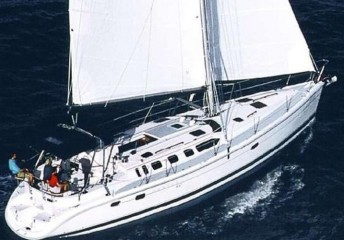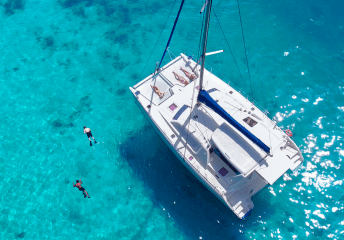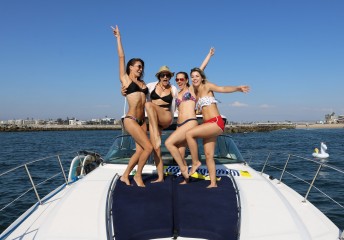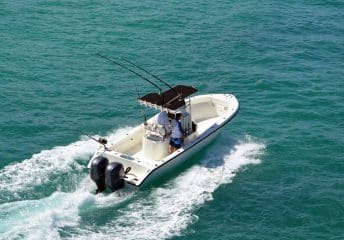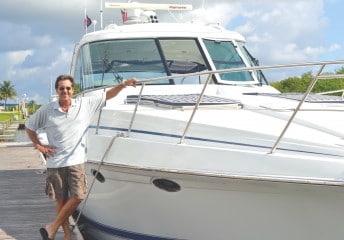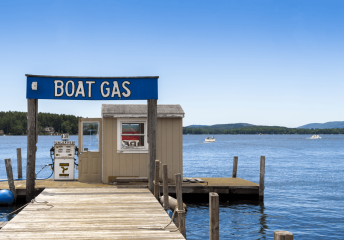Sailing 101: A Beginner’s Guide
Many people think it takes years of training and experience to navigate the waters when it comes to sailing safely. While there is some truth to this, it certainly doesn’t take much to get started. The first step to becoming a sailor starts with knowing the rules and basic vocabulary associated with sailing and then moving on to more hands-on training with your sailboat.
Sailing is one of the most invigorating sports or hobbies out there; almost everyone has dreamed of sailing the seas at one time or another. This luxurious sounding goal can certainly be accomplished by renting or chartering a boat, but having and sailing your own boat comes with the freedom and flexibility most sailboat owners are seeking.
There is a lot to be learned when starting out and learning to sail a boat of your own. While this Sailing tutorial only gives you the basic information you need to get started, once learned, this knowledge can serve as the doorway to your grandest adventures at sea.
Important Vocabulary
Knowing the vocabulary is crucial when it comes to sailing and communicating with others on the water. As you progress through the trials and joys of sailboat ownership, you’ll become more familiar with the terms and vocabulary associated with sailing.
There are over a hundred terms unique to sailing, sailboats, and boating in general. The terms described below are the very basic vocabulary needed to get started on your journey, so familiarizing yourself with them is key to starting on the right foot.
Aft: The aft of the boat means the back end of the boat. If something is said to be “aft,” it’s referring to a location at the back of the boat. The aft of the boat is also known as the stern.
Boom: The boom is the giant horizontal pole attached to the mainsail. Adjusting the boom allows the sail to harness the power of the wind.
Bow: The bow is the front end of the boat. Anything in the front end of the boat will be referred to as “forward” of the boat.
Helm: The helm of the boat is the area in which you steer the boat. Most sailboats have a wheel at the helm of the boat that is used for steering.
Heeling: This is when the wind picks up under your sailboat, causing it to lean over and speed up.
Jib: The jib is the secondary sail on a sailboat. The jib is located forward on the mast and does not have a boom.
Keel: The keel of the boat is the long shark-fin-looking thing protruding from the boat’s bottom. The keel gives the boat stability and helps to prevent the boat from capsizing.
Leeward: Leeward means the opposite direction of the wind or the side of the boat opposite to the wind; the low side when heeling over.
Lines: In the boating community, ropes are referred to as lines.
Mainsail: The mainsail is the biggest sail on the boat. It is triangular and is attached to the boom.
Port: This is anything to the left of the bow. You won’t hear the terms left and right very often on a sailboat; you’re more likely going to hear port instead of left.
Starboard: Anything to the right-hand side of the bow is considered starboard. This term is used instead of saying right-hand side. Left and right can become confusing on the open seas, so these terms were established based on the front of the sailboat.
Tacking: refers to the action of changing direction by bringing the bow of the boat through the wind in the process.
Windward: Windward refers to the side of the boat closest to the wind, the high side, and the direction the wind is currently blowing.
Be Prepared
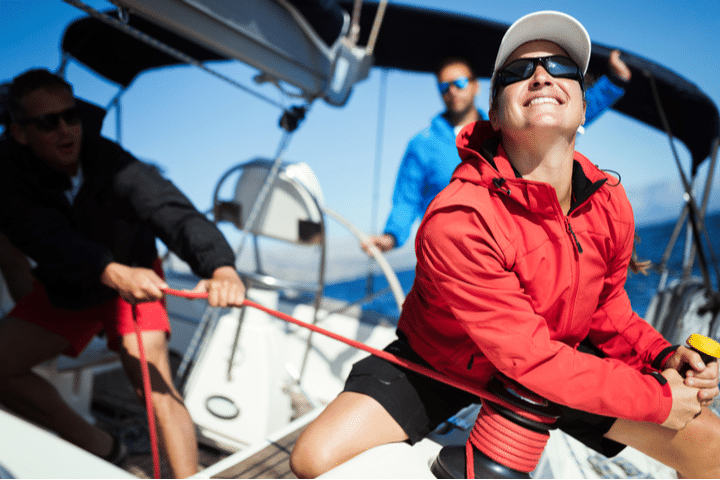
As romantic as it sounds, most first-time sailing trips are not the carefree sail you imagine. They are more a part of a huge learning curve experienced by all sailors at one time or another. Some things can certainly make you more comfortable, and there are probably items that you will inevitably wish you’d brought.
Things can get rough out there, especially if you’re a novice sailor. Don’t be discouraged, though; you have to start somewhere. Make sure you have a waterproof jacket, shoes that won’t slip and slide on wet surfaces, sunscreen, and a life jacket for yourself and everyone on board. Also, make sure the fire extinguishers are up to date…. just in case.
Checking the weather before you go sailing is always a good idea, especially if you’re new to it. Windy conditions can make for some great sailing but can also be a recipe for disaster. Scheduling your inaugural trip on a slightly less breezy day is ideal for getting to know the ropes. Always get your weather forecast from a reliable weather source that’s focused on boating and weather at sea.
One thing that new sailboat owners are not accustomed to is avoiding getting struck by the swinging boom. Until a combination of muscle memory and autonomic reflexes takes over in your brain, it’s going to take some conscious observation to avoid getting hit in the back of the head when the boom swings.
Know the Rules
Knowing the rules of boating is of utmost importance when taking to the water. Could you imagine someone getting a car and driving around not knowing a single rule of the road, sounds like a chaotic mess; the same applies to sailing. Besides, it can be pretty scary when you are heading straight toward the bow of an enormous sailboat, and you’re not sure who has the right of way.
The most common boating rules and regulations can be obtained from boating websites which give you the basics. However, each state has its own set of rules, much of which varies from state to state. Check the rules and regulations for out on the water and those associated with owning and registering your sailboat.
Starting Out
There are various ways to gain valuable experience before hitting the high seas with your crew. There’s almost no amount of reading material that can fully prepare you for sailing, so getting out there beforehand is key to your success.
Take a hands-on sailing course: Taking a sailing class that puts you out on the water with professionals is by far the best way to gain experience. While some of the courses may be pricey, you get valuable information and an opportunity to experience sailboating with other like-minded individuals. You may even make some new friends.
Go out with friends: If you’re considering taking on sailing as a hobby or sport, it’s likely that you either have friends or family involved already or you are living in an area that encourages sailing. Tagging along on a friend’s boat can give you valuable training hours while enjoying the day with a buddy or two.
Rent a boat…and a captain : Renting a boat is a good way to get out on the water with little to no pressure. This is particularly helpful when deciding what kind of sailboat you want to buy. Some websites link boat owners and captains to individuals and families wanting an outing on the water.
Get Out and Practice
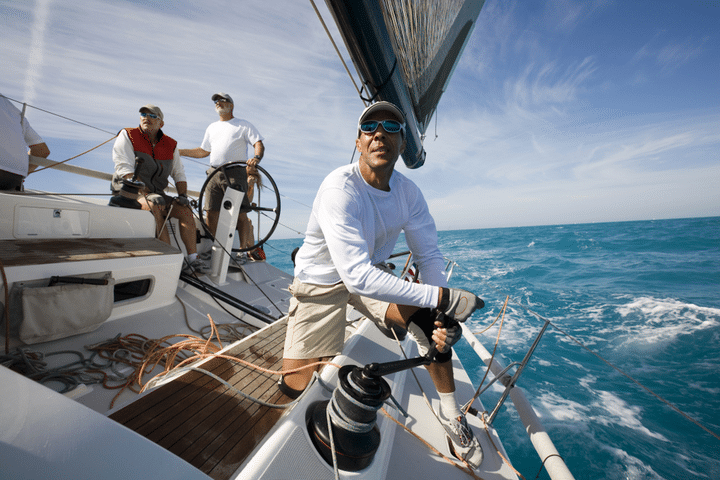
The next step of your sailing adventures begins with practicing. It’s very tempting to hit the water the minute you acquire your new sailboat, but this isn’t necessarily a good idea. Starting slow and getting to know your boat can save you a lot of stress while working through potential mishaps that could otherwise have escalated into a serious problem.
Start slow and small if possible. If you have the opportunity to rent a boat a little lighter or smaller than the one you plan on using, your chances of successfully navigating a bigger sailboat are improved exponentially`.
Take an experienced sailor with you on your first couple of times out in your boat. Let them guide you along as they see potential mistakes while still allowing you a learning curve.
Go to an area that is less likely to be crowded by other boats; it’s easier to focus on the ins and outs of learning to sail when you’re not worried about getting plowed down by a party yacht.
Plan your practice runs when the weather is ideal. As with overcrowding, not having to worry about the weather allows you to fine-tune your technique.
This practice time is the perfect opportunity to learn the points of the sail. There are 8 points of the sail in total, with each having a different effect on the direction and speed of your sailboat. Learning to master the points of sail is essential for quick maneuvers and sudden weather changes.
Drills
It’s one thing to start out slow and easy, but eventually, it’s time to get serious about sailing. Once you’re comfortable and confident in your sailboat, it’s time to introduce some environmental factors you’re likely to encounter while out on your boat, like the bad weather and crowded waters that were being avoided during practice.
Have an experienced sailor accompany you as you venture out into choppy waters, wind gusts, and whatever weather your geographic region might throw at you. Have an expert there as you navigate your way through the inevitable.
The same applies to sailing in crowded waters. This can be very intimidating at first, and it’s best to ease into it with a seasoned sailor on hand. Having someone to help maneuver you through a maze of various-sized boats will be a worthwhile lesson.
Hit the Water

Most sailors know intuitively when they are ready and confident enough to sail without a chaperone. Having someone knowledgeable about sailing onboard is always a good idea in case of an emergency, if at all possible.
There is a fire or your boat capsizes; you must have a plan. Preparing for these events depends on your boat and other environmental factors particular to your geographic region. Having a medical kit and first-hand knowledge of CPR is also a valuable tool for boating safety and emergencies.
Many boaters will have real-time practice drills where they intentionally capsize their boat to train and prepare for the worst-case scenario; others will practice the routine for rescuing someone who’s fallen overboard. It’s good to know the correct procedure for dealing with sailing and boating emergencies.
As a boat owner, it’s also your responsibility to go above and beyond the state laws to protect the waters you choose to sail in. There are many environmental factors to consider, like fuel and oil leaks and greywater disposal, to name a few. Familiarizing yourself with some of the eco-friendly best practices will be beneficial at any level.
Sail Away
It takes some sailors many years to perfect their craft, and even then, each time out serves as an opportunity to learn something more about sailing or experience something new out at sea. Once you get out there and spend time with other sailboat owners, you’ll learn the secrets of the seas and the tricks of the trade.
Sailing is unlike any other sport or hobby out there. For some, it serves as a sense of freedom, others exhilaration. Many sailboat owners enjoy the lifestyle that comes with owning a sailboat; sitting on your sailboat with friends as the sun sets over the ocean certainty exudes a passion for the finer things in life!

Boatsetter empowers people to explore with confidence by showing them a world of possibility on the water. Rent a boat, list your boat, or become a Boatsetter captain today.








